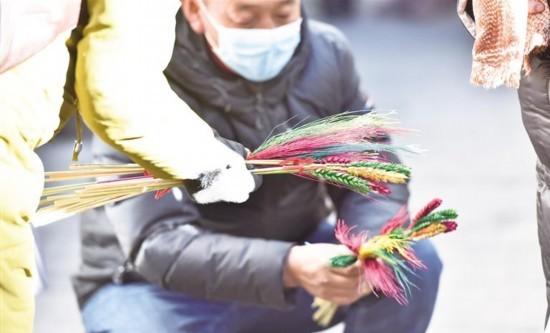
The most beautiful "Tibetan New Year Flower" in Tibet in winter, its name is "Rosamido". In Tibetan, "Rosa" means New Year, and "Beauty" means flowers.
Every year on the Tibetan New Year, every household has to insert "Tibetan New Year Flowers" into the Chema box, which means that there will be a happy year of happiness and harvest in the coming year. The "Tibetan New Year Flower" is the most beautiful flower in Tibetan winter and is specially bloomed for the most important festival of the year, the Tibetan New Year.
Located on the banks of the Dulong River, Sangmu Village is famous for its abundant production of "Tibetan New Year Flowers". Recently, the reporter came to the 5th group of Sangmu Village, Sangmu Community, Dulong Deqing District, and saw that every family's Ajia were sitting around making "Tibetan New Year Flowers". It is understood that they will make "Tibetan New Year Flowers" in November of the Tibetan calendar every year, which is a tradition handed down from generation to generation.
After repeating this action several times, the original plain "Tibetan New Year Flower" became colorful, like a bundle of beautiful "flowers" of pink, light green, cyan and yellow.
It is understood that the "Tibetan New Year Flower" is a kind of wheat ear-shaped flower that has been dyed, handmade and has different colors, which is sown in April every year, watered in June, harvested in September, and then hung and air-dried and well preserved. In November of the Tibetan calendar, the villagers began to purchase dyeing pigments and yarn ropes for bundling, and took out the "Tibetan New Year Flowers" that had been harvested and dried, dyed, bundled, and then sold.
According to Lobsang Tudan, the village chief of the 5th group of Sangmu Village in Sangmu Community, the dyeing technology of "Tibetan Nianhua" as the intangible cultural heritage of Lhasa City and Dulong Deqing District should inherit and carry forward the characteristic skills, promote the development of the "Tibetan Nianhua" industry, promote the construction of the new socialist countryside with Chinese characteristics, accelerate the development of rural tourism, integrate and enhance the cultural resources of the "Tibetan Nianhua" in the Sangmu community, and at the same time, it has also led to the growth of the villagers' income, at present, there are 145 households in the 5 groups of Sangmu Village, and each family will participate in the "Tibetan Nianhua" every year. In the production, the household income of each household can reach more than 20,000 yuan.
Tsering Wangmu, a 37-year-old villager in Group 5 of Sangmu Village, told reporters: "When making 'Tibetan New Year Flowers', you need to put the dye in it when the water is boiling, quickly stir it well, and then put the 'ear of wheat' and 'Rosamido' into the dye for about 5 minutes, and repeat it two or three times to get the good color." 'Tibetan New Year Flower' has two different flower shapes, 'Ear of Wheat' and 'Rosami Flower', the current price is 3 yuan to 5 yuan a bunch, each bunch will be 5 different colors of the collocation of good bundling together can be. ”
"I planted two acres of land last year, and I expect to earn more than 20,000 yuan this year." Tsering Wangmu said with a smile.
"Mulberry community has a long history of planting 'Tibetan Nianhua', from planting, picking, drying to dyeing, following the ancient techniques passed down from generation to generation, with a strong local atmosphere and local characteristics. Nowadays, the sales of 'Tibetan New Year Flower' are all over Shigatse, Nyingchi, Shannan, Nagqu and other places, and are favored and loved by the majority of consumers. Lausanne Tudan said.
In July 2018, the traditional dyeing technique of "Tibetan Nianhua" in the Sangmu community was officially included in the list of municipal intangible cultural heritage. Nowadays, the mulberry community has become the main production area of "Rosamiduo" in our district, and the reputation of the hometown of "Rosamiduo" is also known as the snowy plateau.